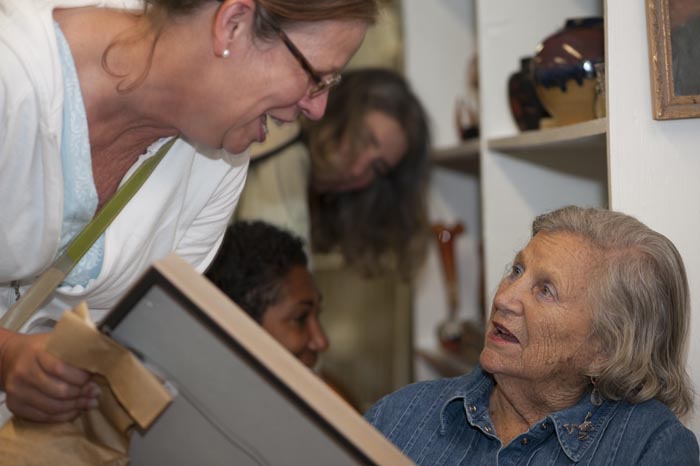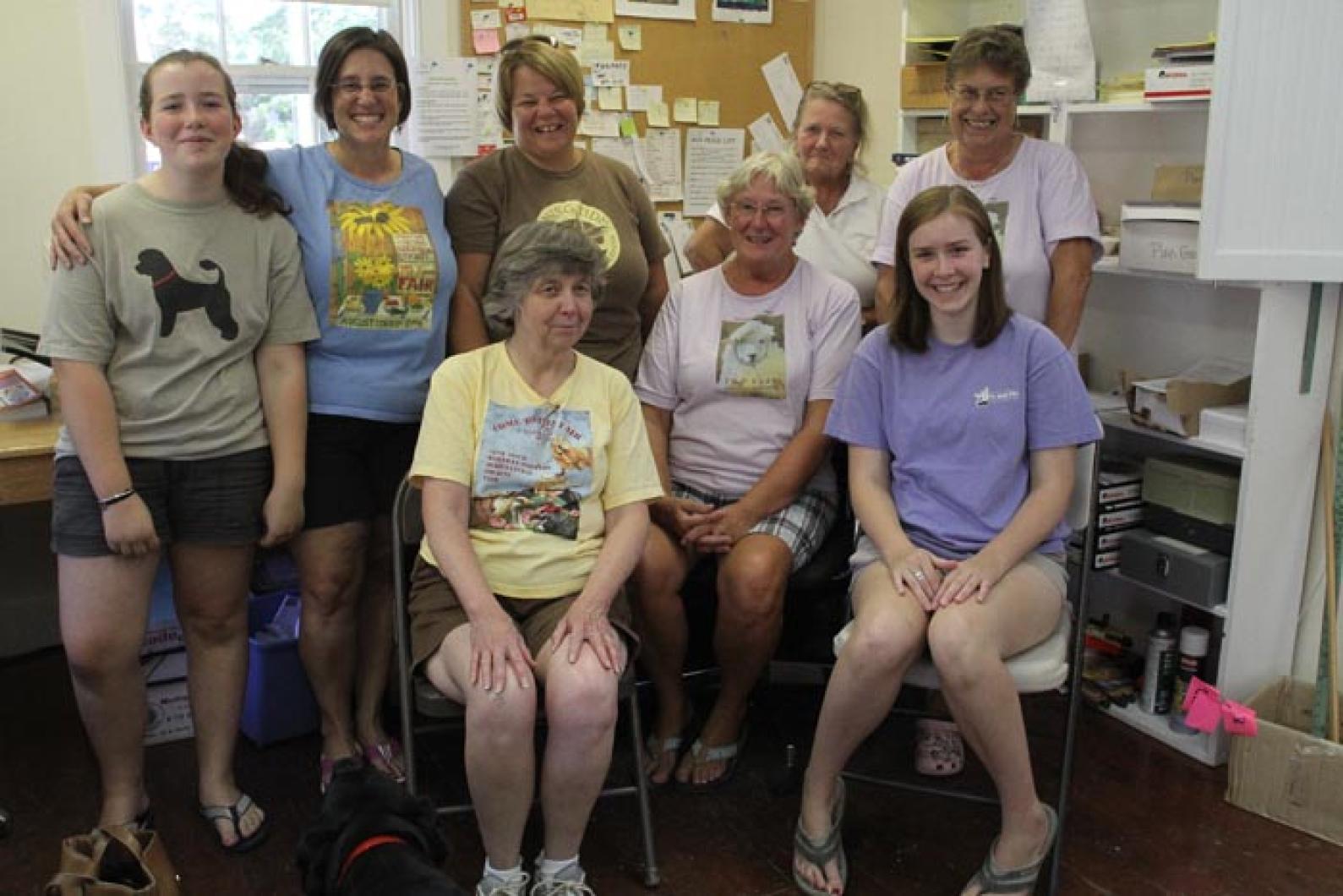The ribbons were very important at the time, Eleanor Neubert recalled. She would show her 4-H calf (later, her 4-H cow), her rabbits and her hens, and she’d plant vegetables in her plot of the family garden so she could enter those in the fair, too. One year she competed in a horse show but found that wasn’t nearly as fun as the other activities.
“I didn’t like that,” Mrs. Neubert said of her lone equestrian turn. “I would rather be on the outside looking in than at the center of attention.”
Ironically, when it comes to the fair, Mrs. Neubert has been on the inside looking out since 1984, when she first took over the position of fair manager. But it’s the fair itself that grabs the attention, though the job certainly puts her at the center of things.
And with planning for any given fair starting before the four days of summer fun have ended—Mrs. Neubert and the fair committee keep a page in one of their notebooks with “suggestions for next year”—it’s a year-round job. Mrs. Neubert gets calls at home in the winter from would-be fairgoers planning their summer vacations around the festivities. She meets once a month with the committee to have dinner and “talk fair.”
“It’s fun to do,” she said. “It’s so different from my other jobs in life.” (In her non-fair time, Mrs. Neubert is Mrs. Eleanor, the kindergarten and first grade teaching assistant at the Chilmark School. She also runs Flat Point Farm in West Tisbury with her brother, Arnie Fischer.)

But it was never a job Mrs. Neubert, now 64, planned to have. When a former fair manager first approached her with the offer, she remembered, “I said, ‘Oh no, I couldn’t do thatit’s way too big of a job, it’s not something I could do.’
“Well, she kept at me for six months,” Mrs. Neubert continued, “So finally, in Febuary ’84, I said, ‘Well, okay, I’ll give it a try for one year.’ And here I am.”
She is quick to point out that she would never have stuck around for 27 years if not for the “wonderful fair committee” helping out at every turn.
“Most of us have worked together for most of that time,” she said. “Including the electrician [Barry Stone, who joined the team one year after Mrs. Neubert did].”
Mrs. Neubert and the committee have met with bumps along the road to a successful Ag Fair, but none so challenging as the years surrounding the fair’s move from its old stomping grounds at the Grange Hall to its current location on Panhandle Road. There was the initial decision to move, followed by the scouting of potential new locations. Once the land had been purchased, there was the decision of what sort of building the new Agricultural Hall would be.
“The original thought was to put up a metal building, and put it right up,” said Mrs. Neubert. “Some of the people in town and on the Island decided that was not the way to go, so there were these two camps — you know, something quick and a little cheaper, or something more traditional that maybe takes longer.
“And eventually we voted to go with the barn raising,” she continued.
The 100-year-old framework of the hall, which was moved to the Vineyard from Woodsville, N.H., is in keeping with the general philosophy of the fair.
“[The fair] is educational, it’s traditional,” said Mrs. Neubert. “I think people like that, that the traditions are still with us.”
She is genuinely stumped trying to choose a favorite tradition.
“I don’t have any favorite parts, I don’t think,” she said. “It’s the big picture of everything that’s going onI think I like all aspects of it.”






Comments
Comment policy »